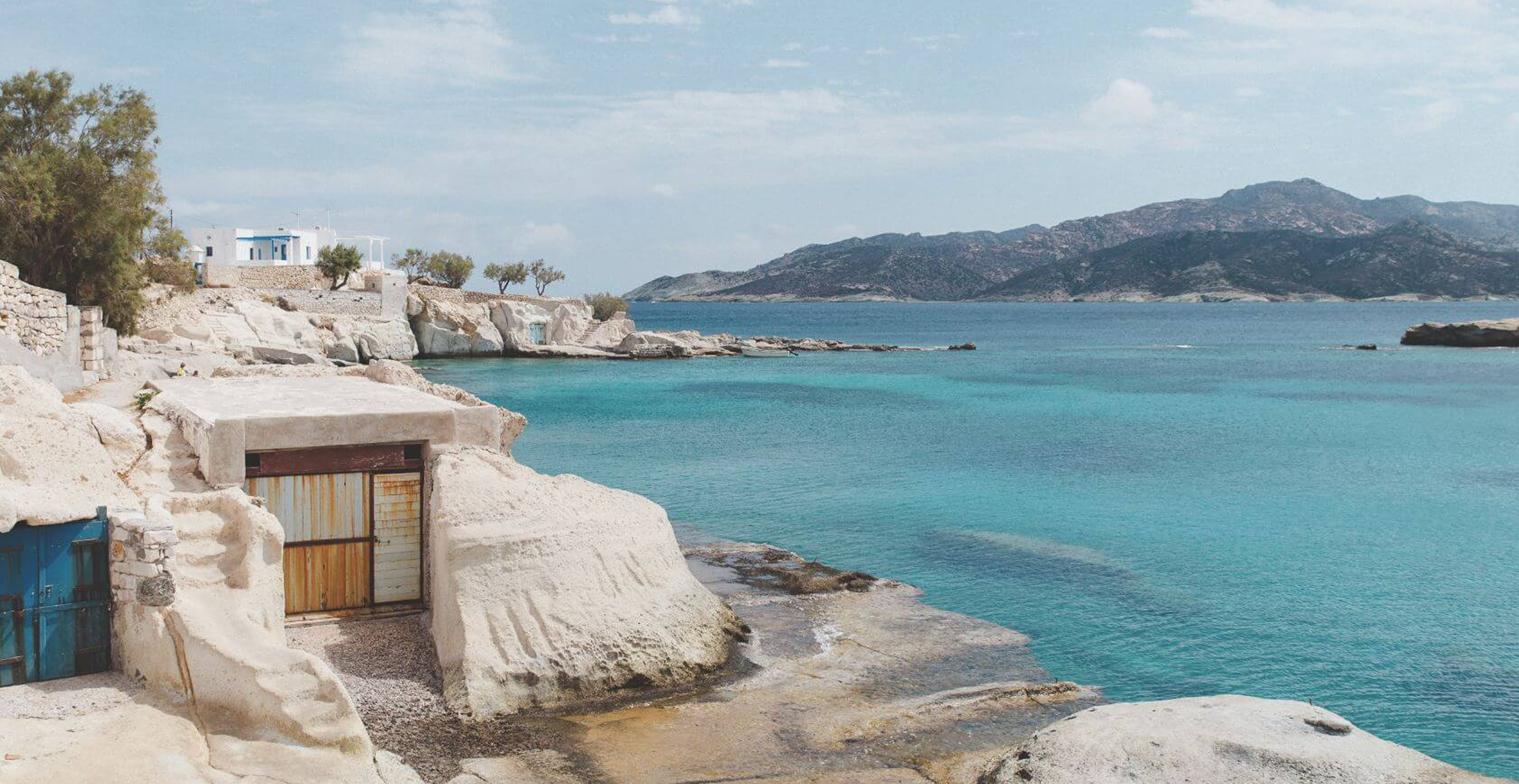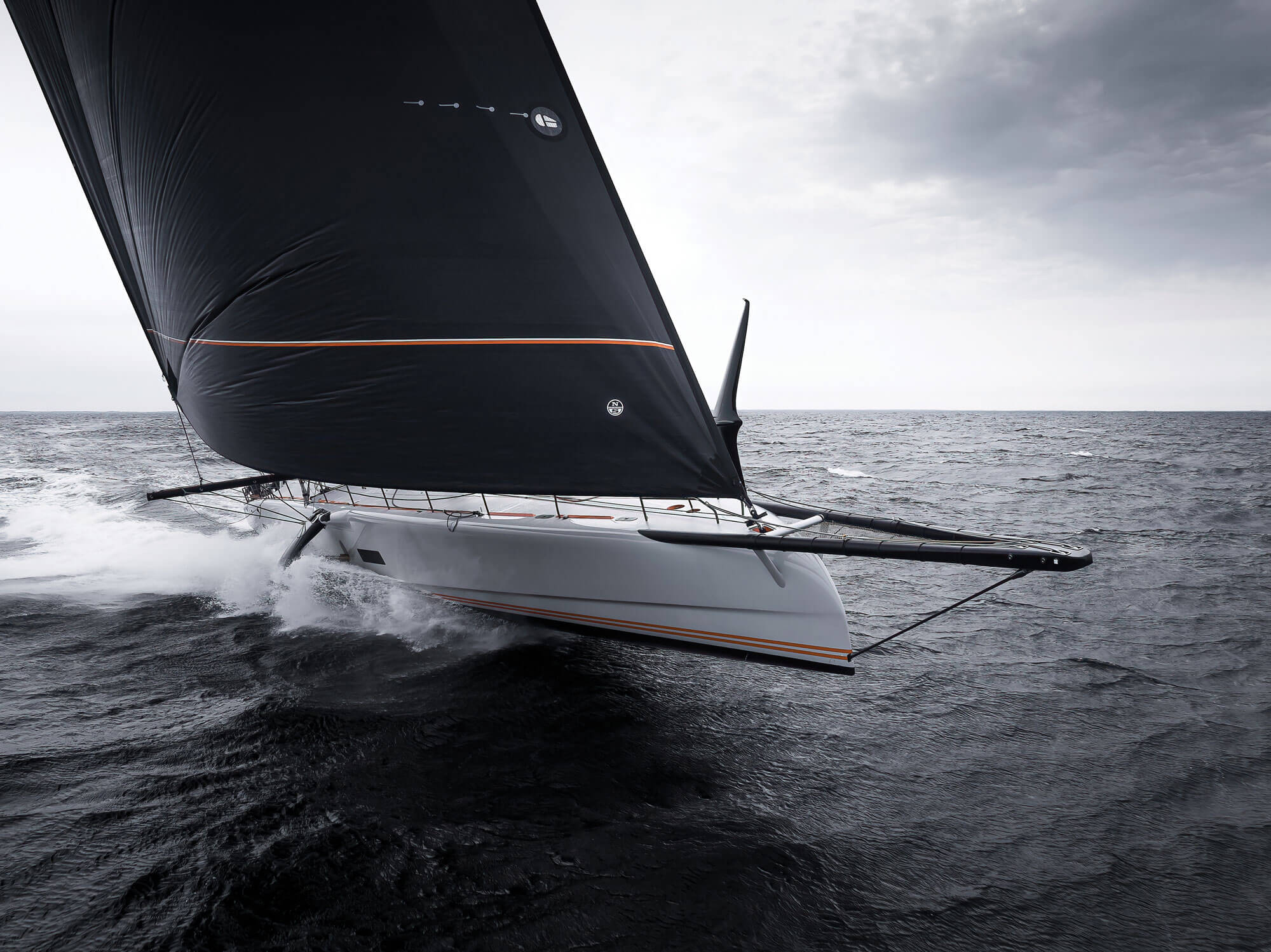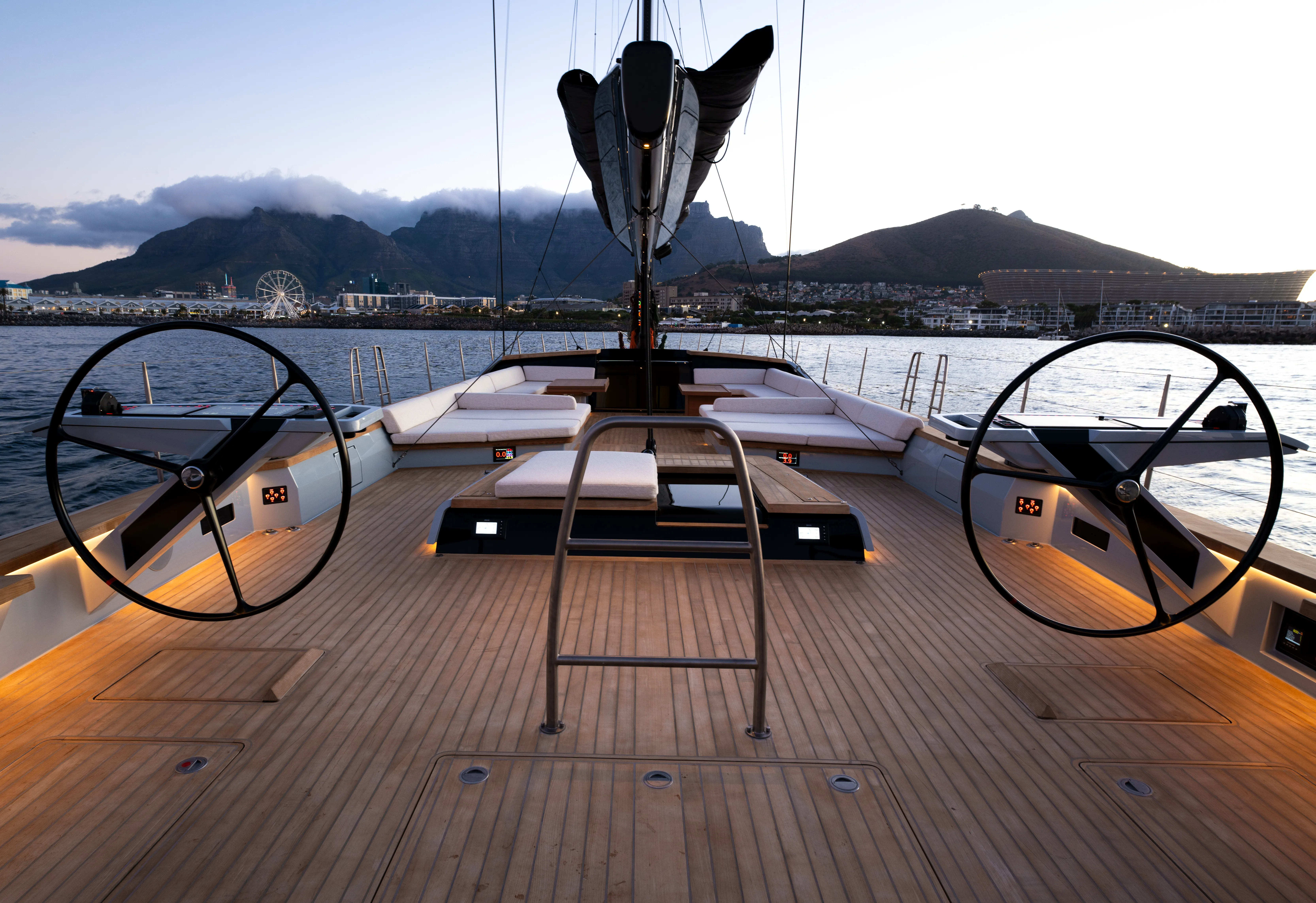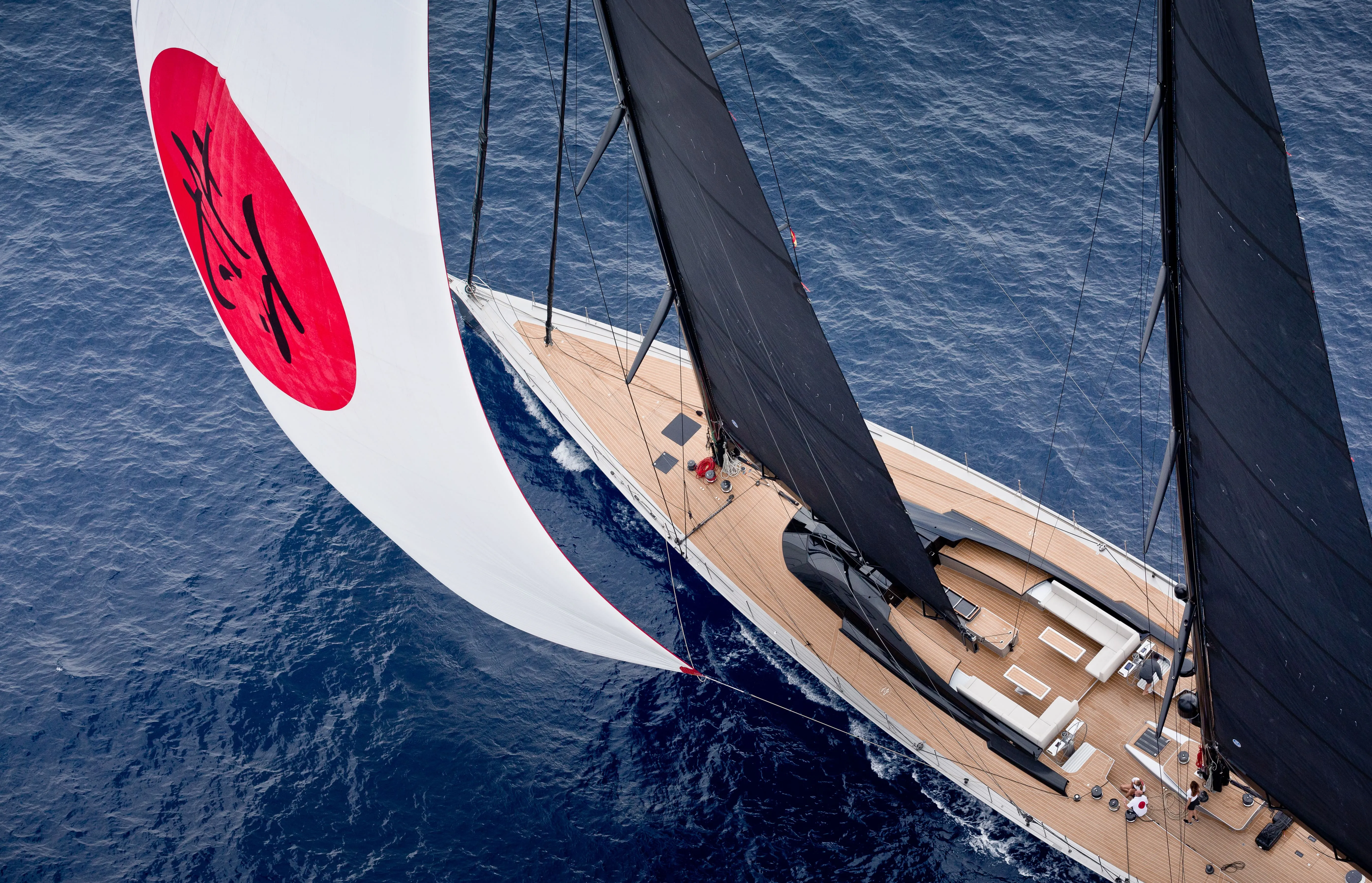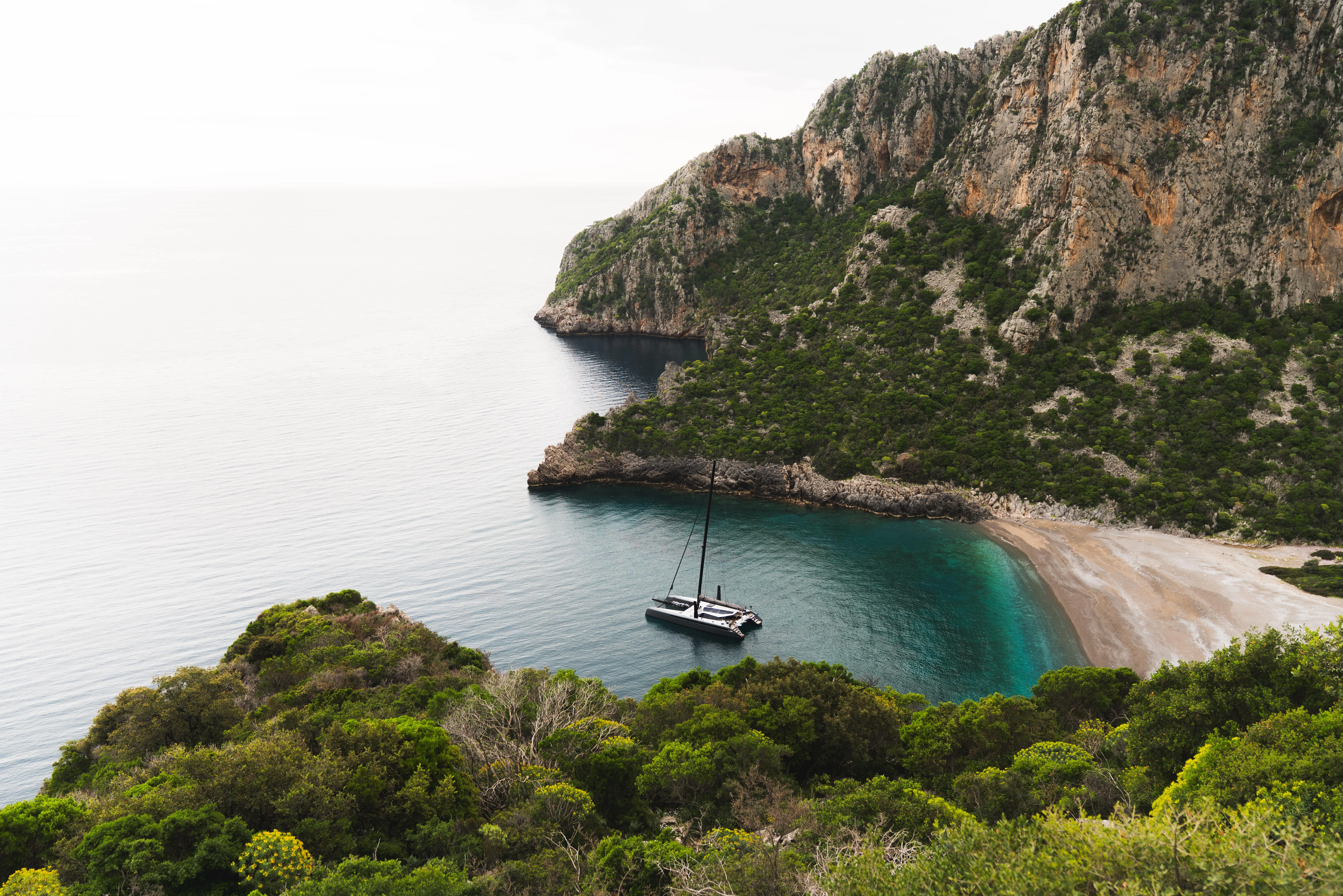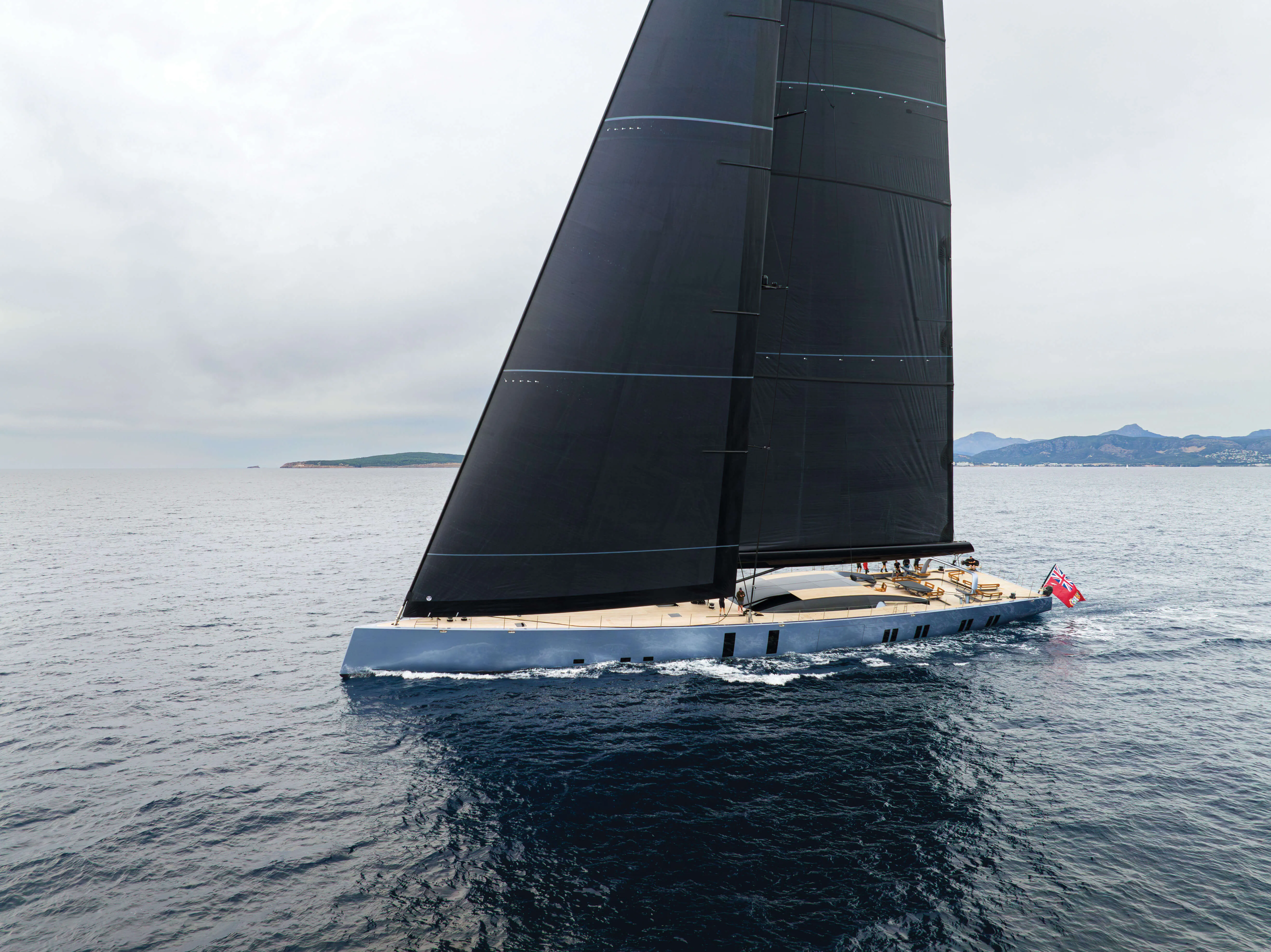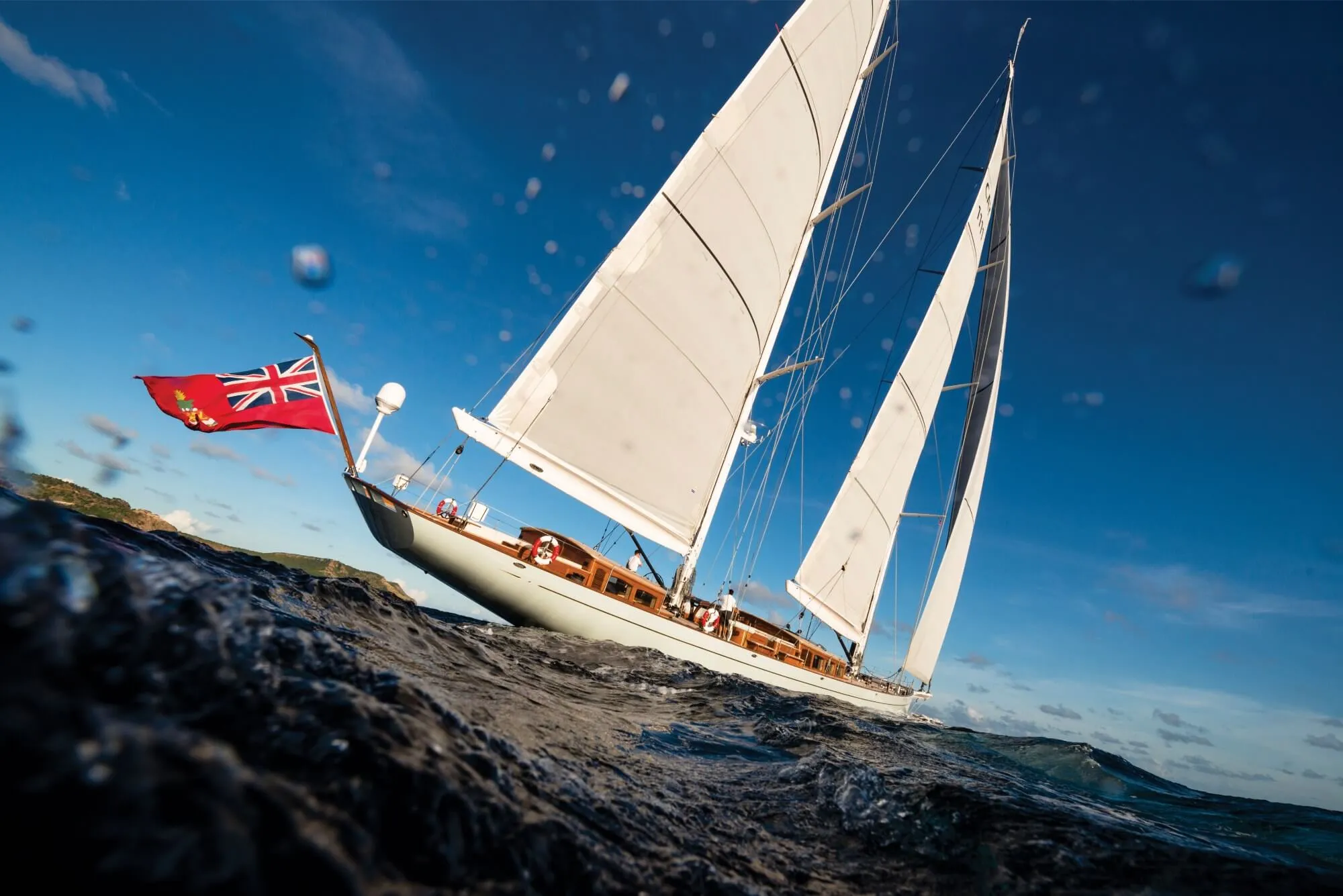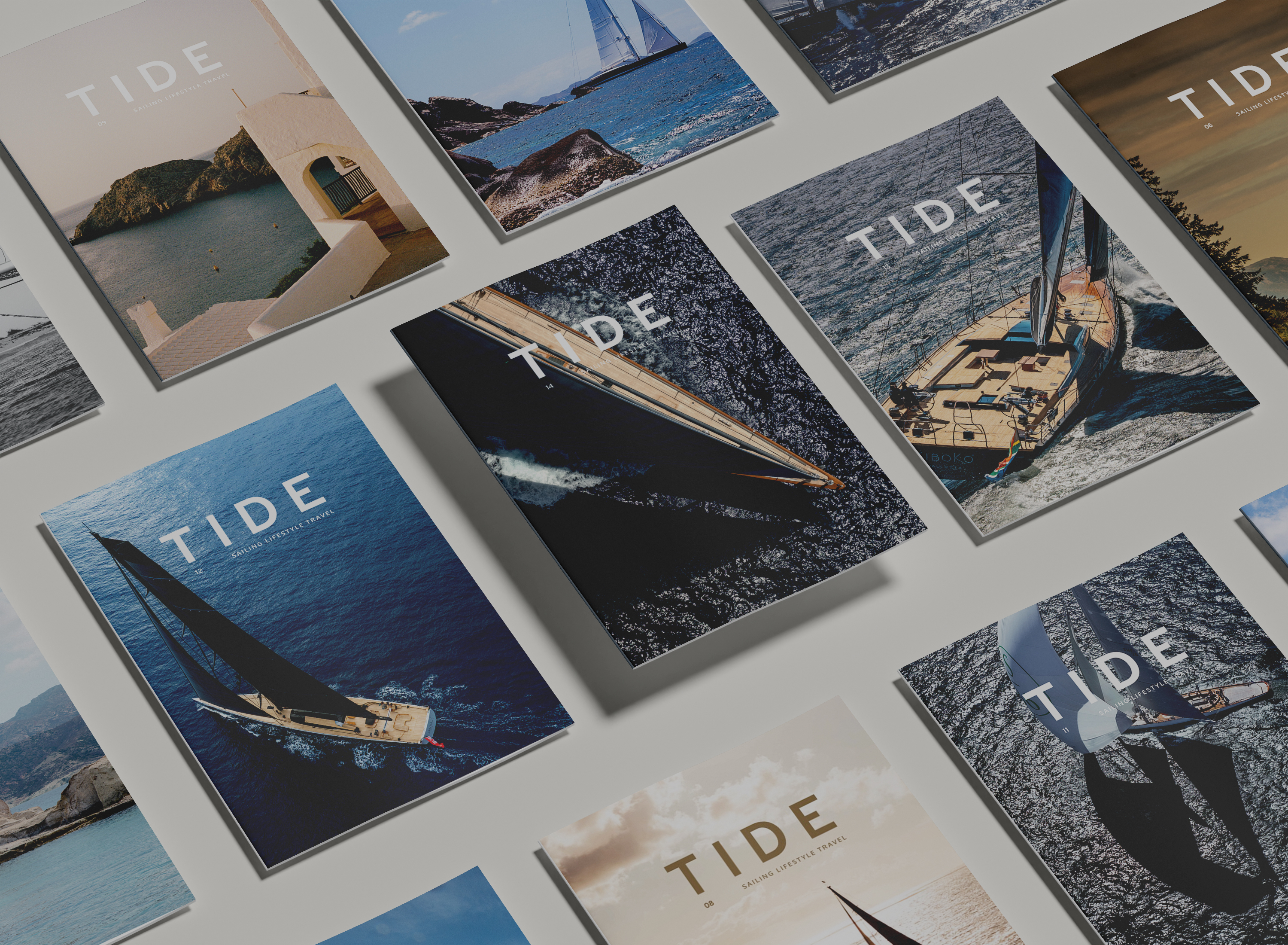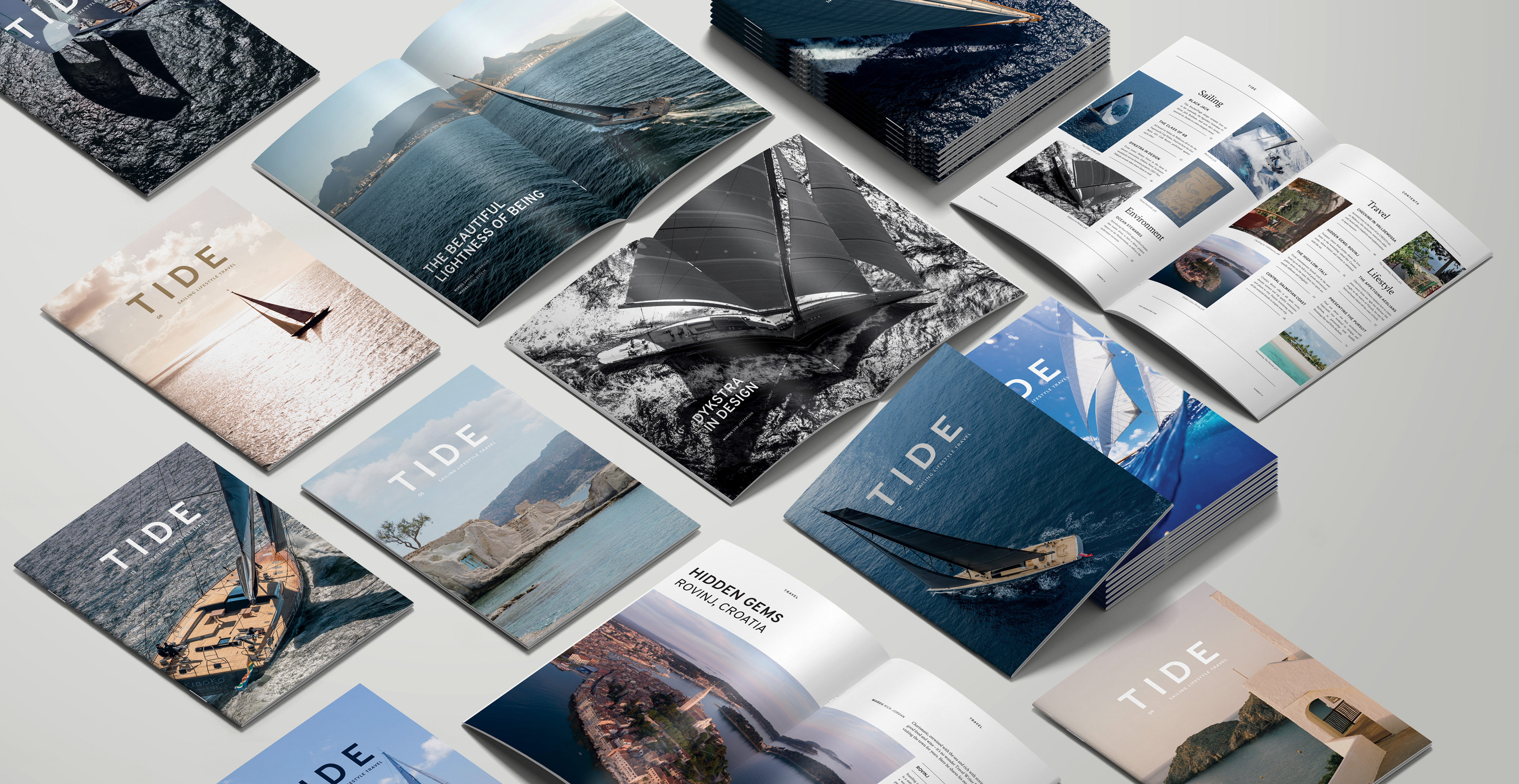Rarely has a sailing boat been as accurately named as the 111ft Baltic Yacht Raven. She bears more than a passing resemblance to the bird, thanks to the deeply arched twin foils cantilevered out amidships like wings, and the long 8m beak of a bowsprit. It took a remarkable owner, an unconventional Finnish designer and a shipyard capable of fastidious precision to bring Raven to life.
To get the measure of this boat you need do no more than click onto Baltic Yachts’ website and watch one of the videos of her skipping across the waves at 25 knots under a full suit of sails. Impressively, this vision is no sudden acceleration down the back of a wave or on a gust of wind – this is a speed she will happily maintain for hour after hour.
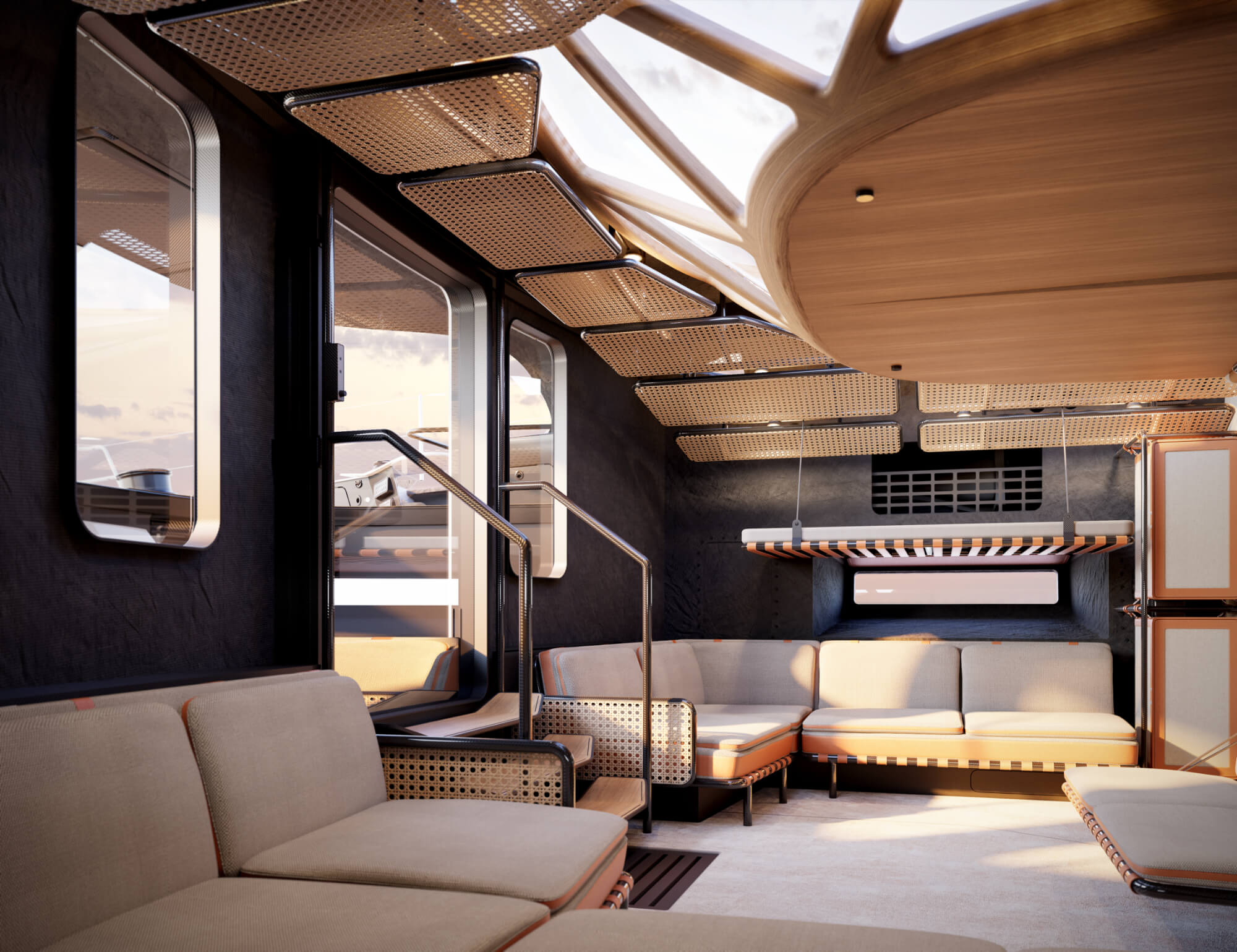
The key to this, of course, is her foils. They were developed specially for the project, and were the subject of intense modelling by naval architects at Botin Partners. “It’s much harder to make a bigger boat with foils,” says project design lead Jarkko Jämsén, who was recruited by the owner to bring in the rest of the team. “Foil strength increases to the second power, whereas forces increase in the third.”
Unlike the all-out drag racers of
the America’s Cup, Raven’s foils do not lift her clear of the water. She skims, with the foils providing enough lift to negate some 75 per cent of her displacement. So she combines the handling and acceleration of a 12-tonner with the sail plan of a 50-tonne yacht. “She changes direction so fast,” says Jämsén. “The inertia is much bigger than a normal yacht.”
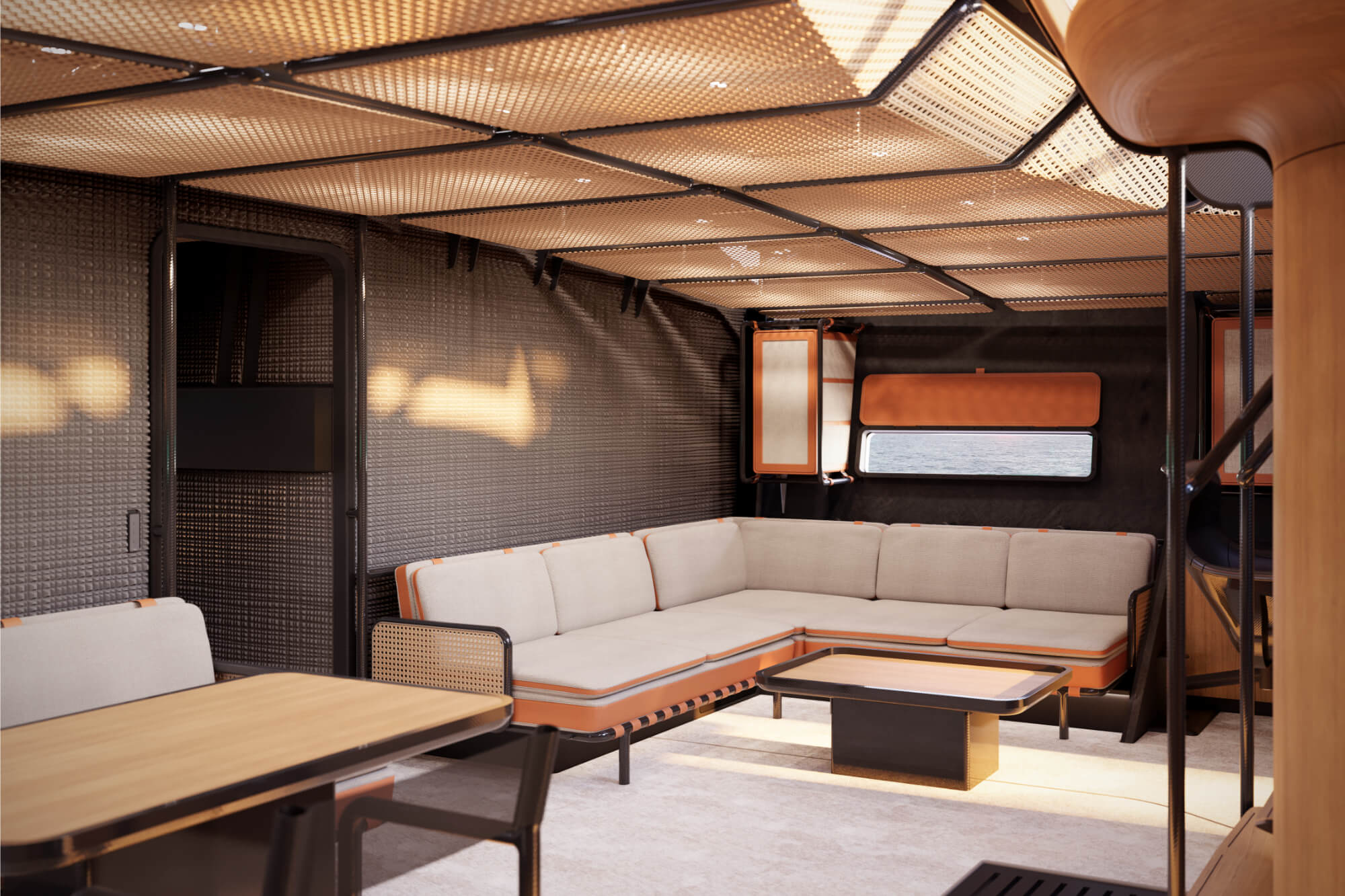
In concert with the foils, there are trim tabs at the stern which keep her level, a token 9-tonne keel on a 5m-long stem and a whopping 10,000 litres of water ballast. When it comes to tacking or gybing, it takes a minute to pump enough water leeward to begin the manoeuvre. Nothing like this has ever been done on this scale before, so the crew have been in permanent learning mode since the boat was launched last summer.
“With a boat like this, the hard work starts once it’s launched,” says Sailing Manager Klabbe Nylöf. “It’s a lot of new technical items that have to be tested and developed. We have been sailing out of Lanzarote since December and we have seen and felt the potential, but we are not there yet.”
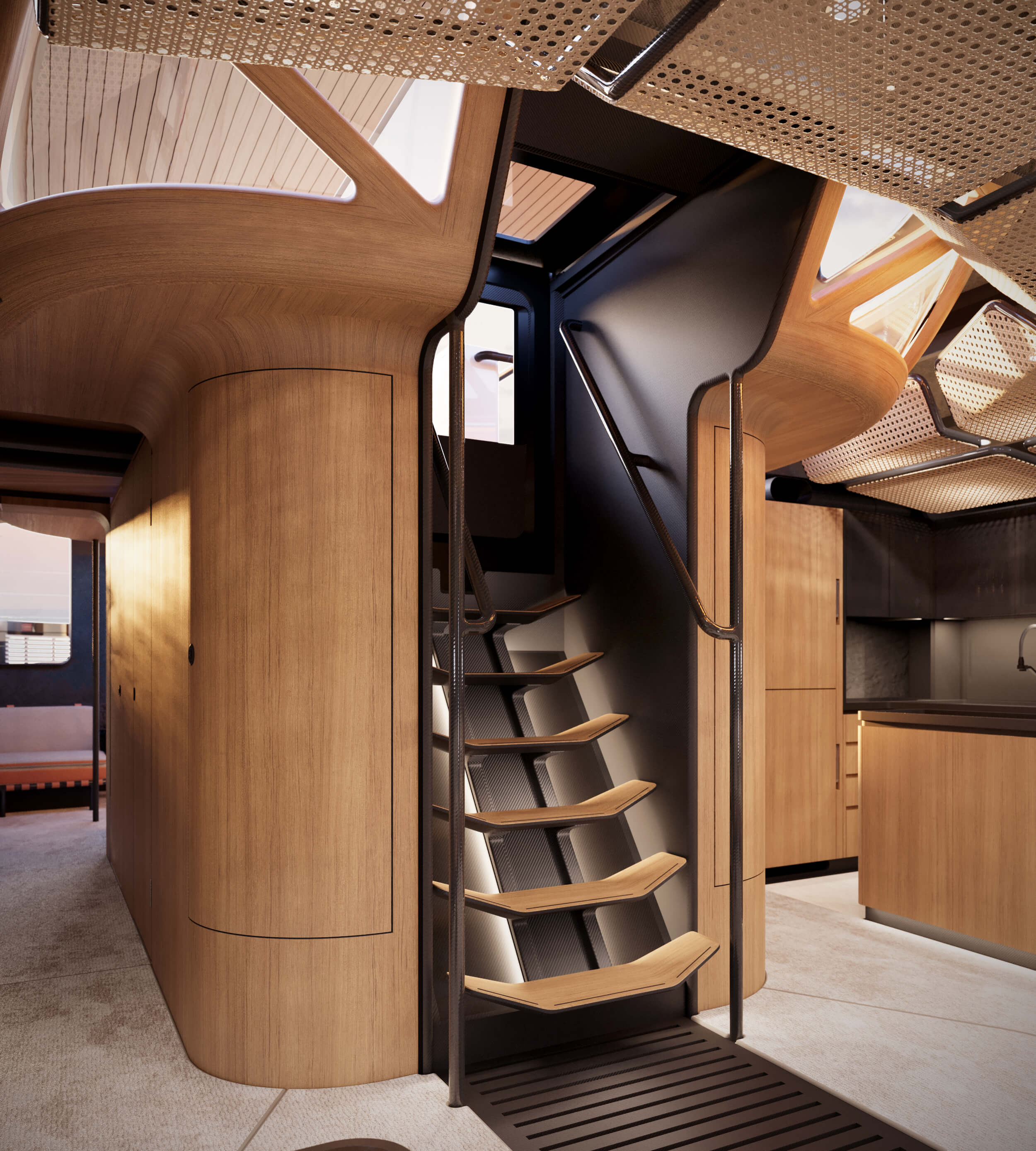
Speed, it seems, is not the problem: Raven has regularly hit 30 knots or more and will stay there as long as the conditions hold. “The boat has performed fantastically well and she is very sailor-friendly – more than you’d expect her to be when you look at her,” agrees Nylöf. “[Her] platform is working perfectly well. It’s the combination of using all these systems integrated with water ballast, interceptors – everything together makes it complex. No boats in this size have been designed with foils, so we have a blank sheet to put data into.”
In anything below 8 knots of wind, the foils remain hoisted up clear out of the water. Between the keel and the water ballast, the boat can be sailed safely in any conditions without the foils, Nylöf says. “Once you come down to lighter [winds], a boat like this becomes more and more displacement-oriented.” On the other hand, she can reach 30 knots of boat speed in more than 15 knots of true wind. With such narrow margins, experimentation is the key to raising average speeds.
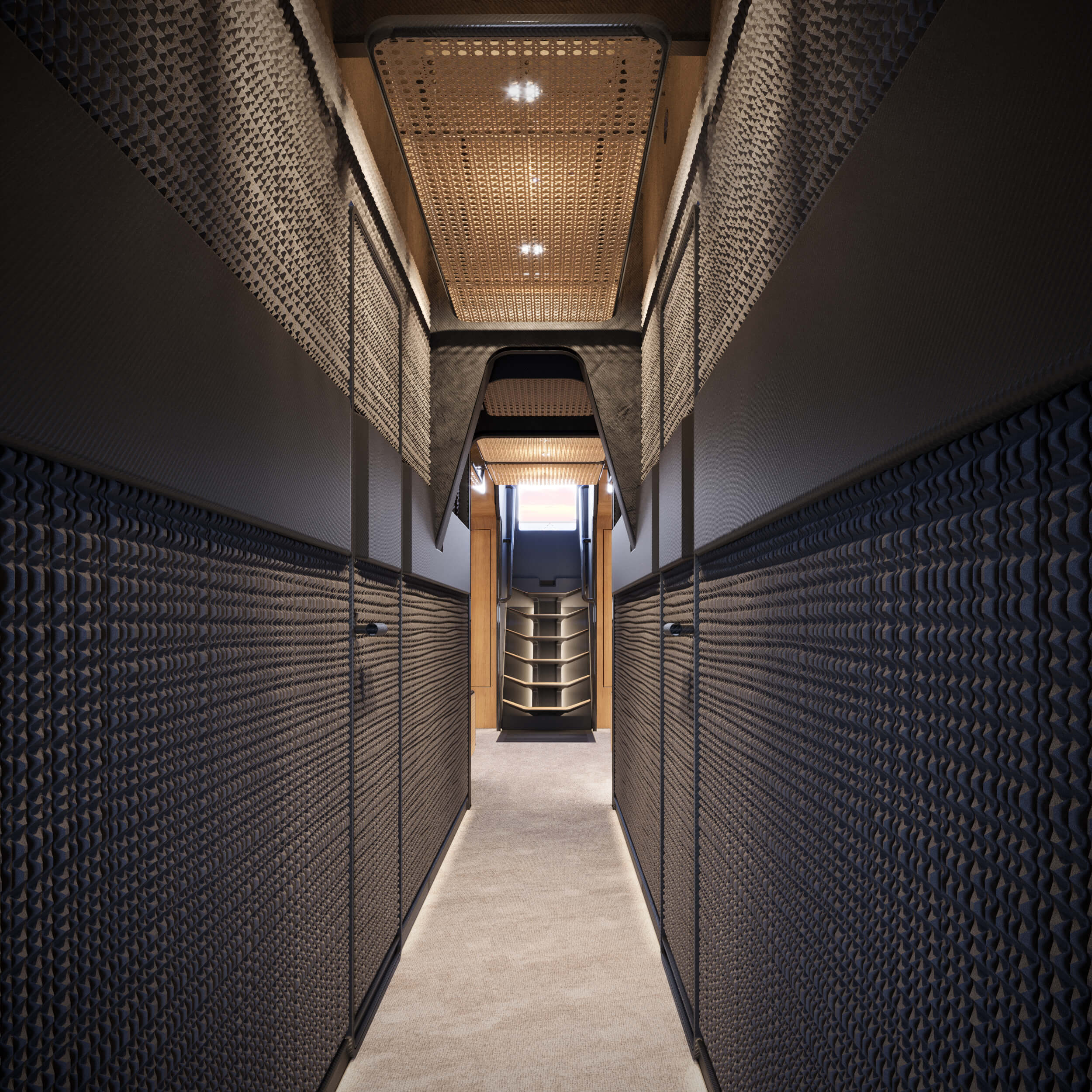
The permanent crew numbers eight under Captain Damien Durchon, lured away from Comanche. But for performance testing (Nylöf hates to use the word racing while the boat is in development), they bring on another 15 people from all over the world. Even securing the six week-long training sessions they’ve had to date is a major logistical feat. Nylöf is reluctant to set a date on the boat’s first competitive outing, but it seems likely it will be this summer at some point.
Raven is not designed for round-the-cans racing, as her technology would put her at a huge ratings disadvantage – where’s the fun in taking line honours and placing last on adjusted time? Instead, she is conceived for offshore racing, like the RORC Caribbean 600 or the Transpac, and for setting speed records across open water. She is the rarest of things: a racing Superyacht. Or as Nylöf likes to put it: “a fast daysailer”.
That doesn’t mean she wasn’t built in the manner of a race boat, however. In fact, Baltic Yachts believes it was chosen because of its incredibly rigorous approach to controlling the weight of the boat. “It became quite obvious early on that we were the yard that could help with this ‘crazy idea’, as it was pitched to us,” says EVP Henry Hawkins. “Yes, we had the composite expertise, but you can find that elsewhere in the world. It was more the fact they were going to try to create a functioning Superyacht, not just a race boat, which fits very much within our remit. And in order to do that, we were going to have to operate in a weight envelope.”
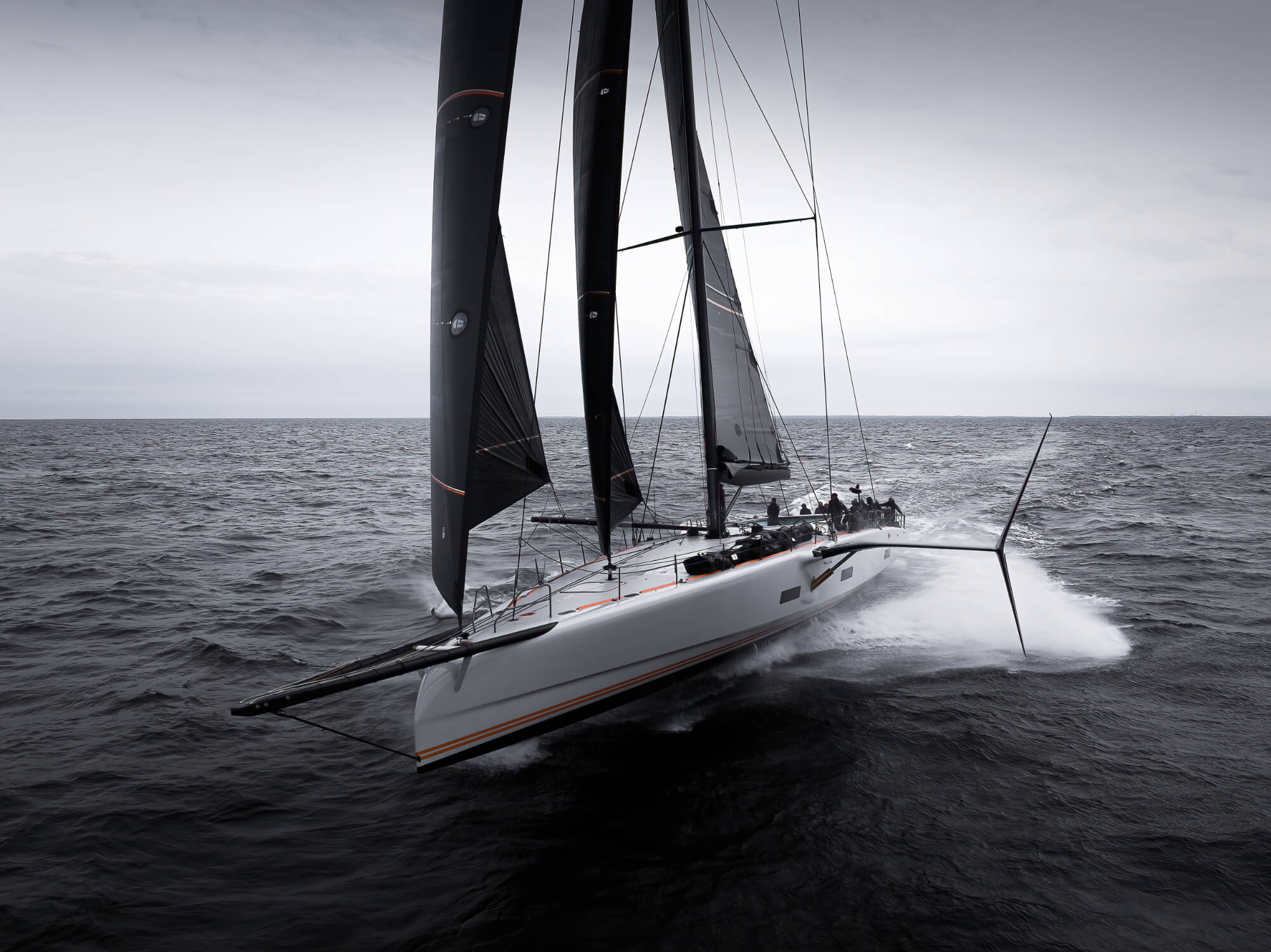
Just to illustrate how strict a regime this was, the build team ended up chasing down even marginal 1-2kg weight savings in the quest for their final goal. For example, a smart technician managed to save around 2g by replacing a titanium screw in the headlining with a custom-printed plastic clip. Multiplied by a thousand screws, it makes a difference. Elsewhere, the interior was designed by Jämsén to fit around the structural elements of the boat. Raven’s carbon hull is showcased throughout to beautiful effect, while headlining panels were crafted from rattan and carbon frames. Instead of joinery cupboards and wardrobes, they have used hanging canvas boxes, and everything from seating to tables forms part of the structure. “Sofas are in a carbon-fibre frame connected to the wall, and if you need access, the whole thing hinges up. All the objects are multi-level components,” explains Jämsén. “It’s an interesting design.”
A big win was achieved by building the hull moulds out of expensive carbon for a near-perfect finish. Being far more accurate than GRP or wood, the carbon meant no fairing compound was required. Instead, Baltic achieved the required Superyacht finish by using specially selected paints that filled any microscopic imperfections. They also saved 160kg by using Perspex instead of glass for the ‘bird’s nest’, which turns the cockpit into a gallery showcasing the carbon innards of the yacht – apparently in tribute to a 1960s Maserati that did something similar.
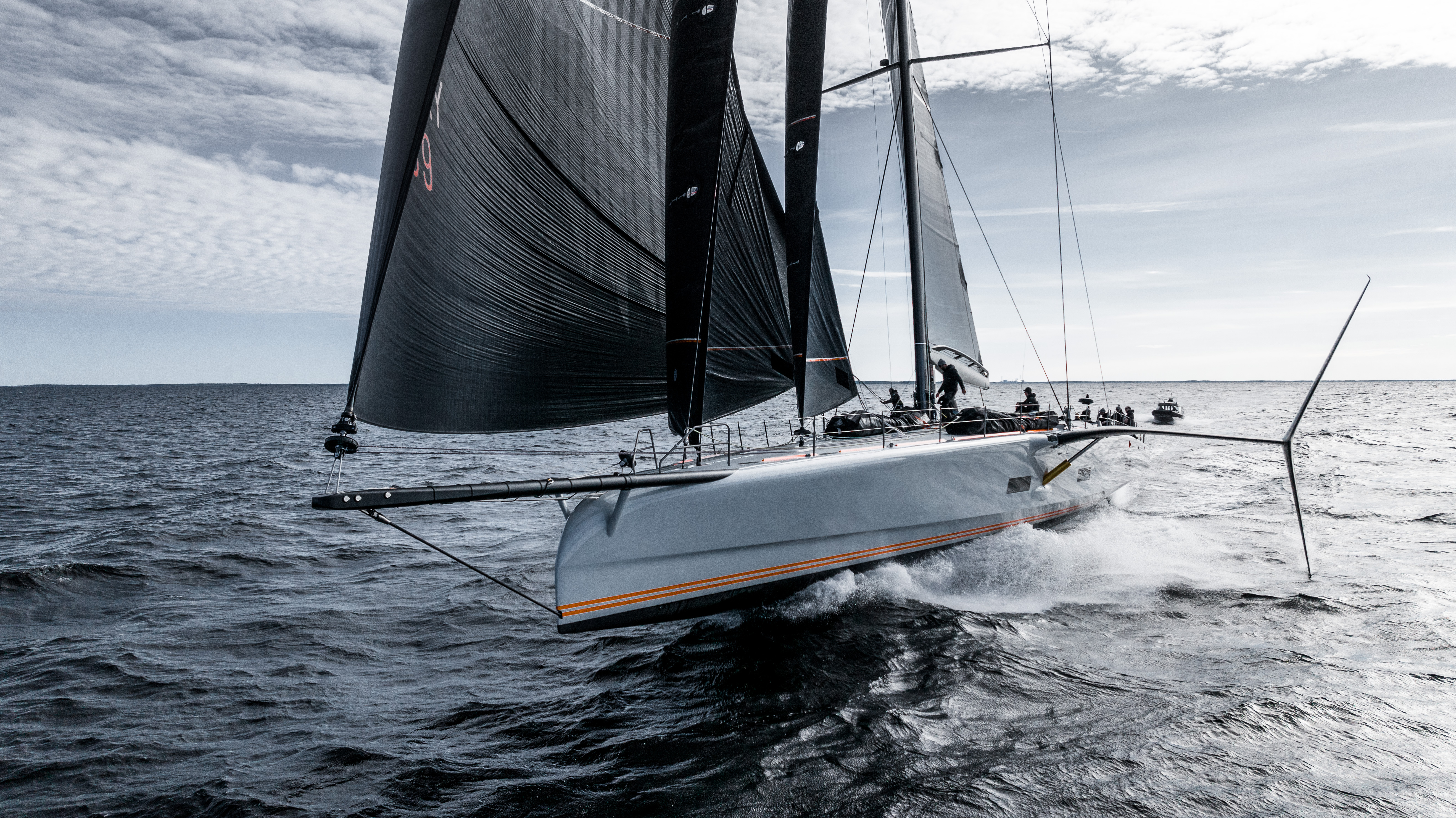
Southern Spars was also handed a demanding weight target when it came to designing the rig. Working with its sister company North Sails, it was able to maintain the same working model of the entire sailing system from the concept stage through to production and commissioning. “The balance of the sails to the foils – where the centres of effort sit – these are minute details, but if you had to pull a number out and maintain it empirically, it’s almost impossible,” explains Southern’s Group Head of Global Design, Dale Morris.
But its real genius has been in developing a way of monitoring and presenting rig loads to boost performance. “In actual usage on the boat, you understand the loads in the sails and the rig, because we have overlaid the real and target figures, pulling it all together into an easy-to-manage interface,” Morris adds.
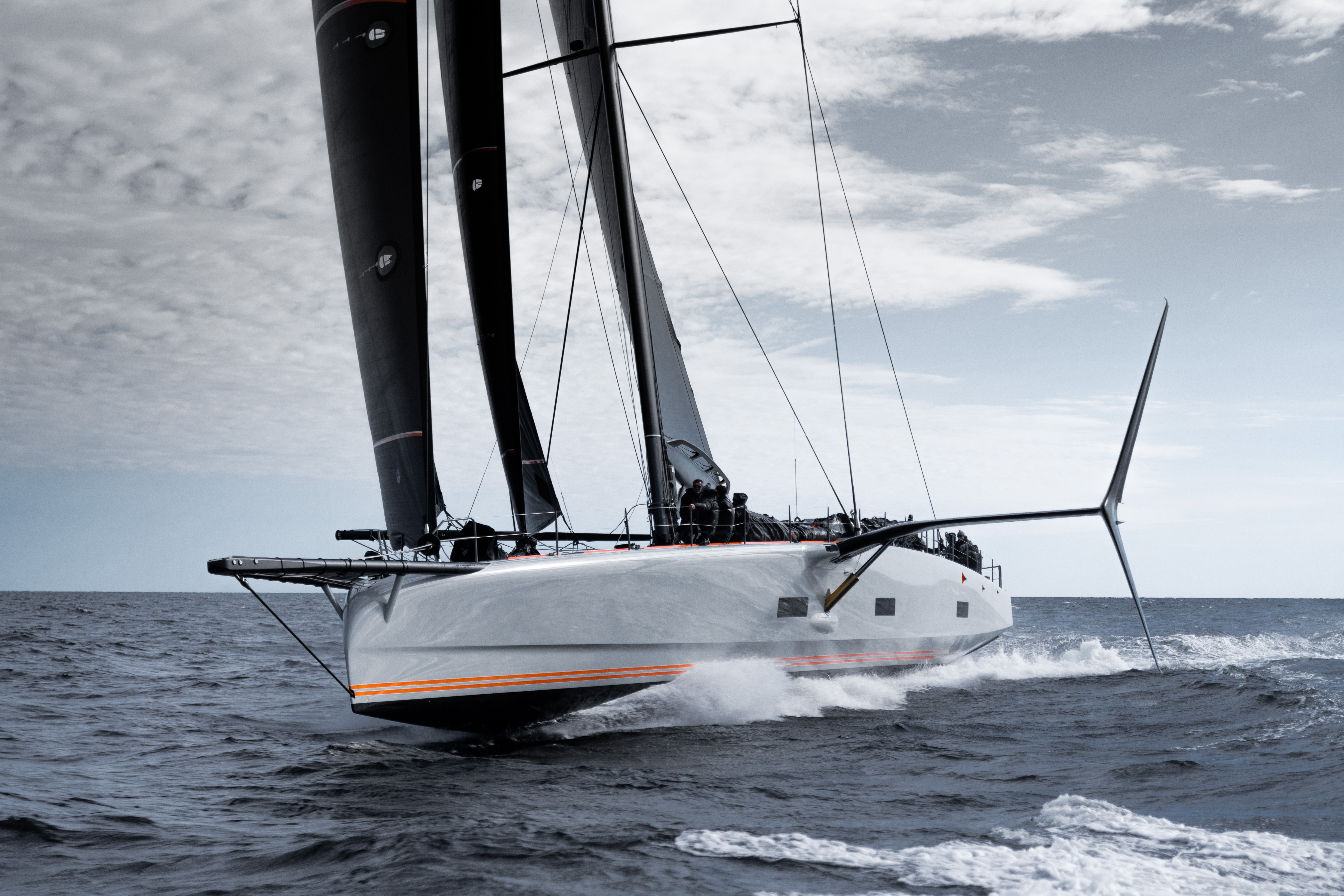
Abundant as the superlatives are to describe this boat, she is not without compromise. The owner has had to accept that Raven is fairly noisy by Superyacht standards. It’s a combination of those high speeds, carbon-fibre hull and very little insulation. Limited acoustic lining has been applied to some bulkheads, but Baltic says this will only “take the edge off”. Then again, as a daysailer, that doesn’t matter so much. An immaculate but simple owner’s cabin aft has a fold-down double berth that will probably only see use during offshore races, when the focus is on catching much-needed rest rather than luxuriating. Crew cabins are positioned forward, with the large saloon amidships. Less of the structure of the boat is visible here – a curious inversion of the normal way of things.
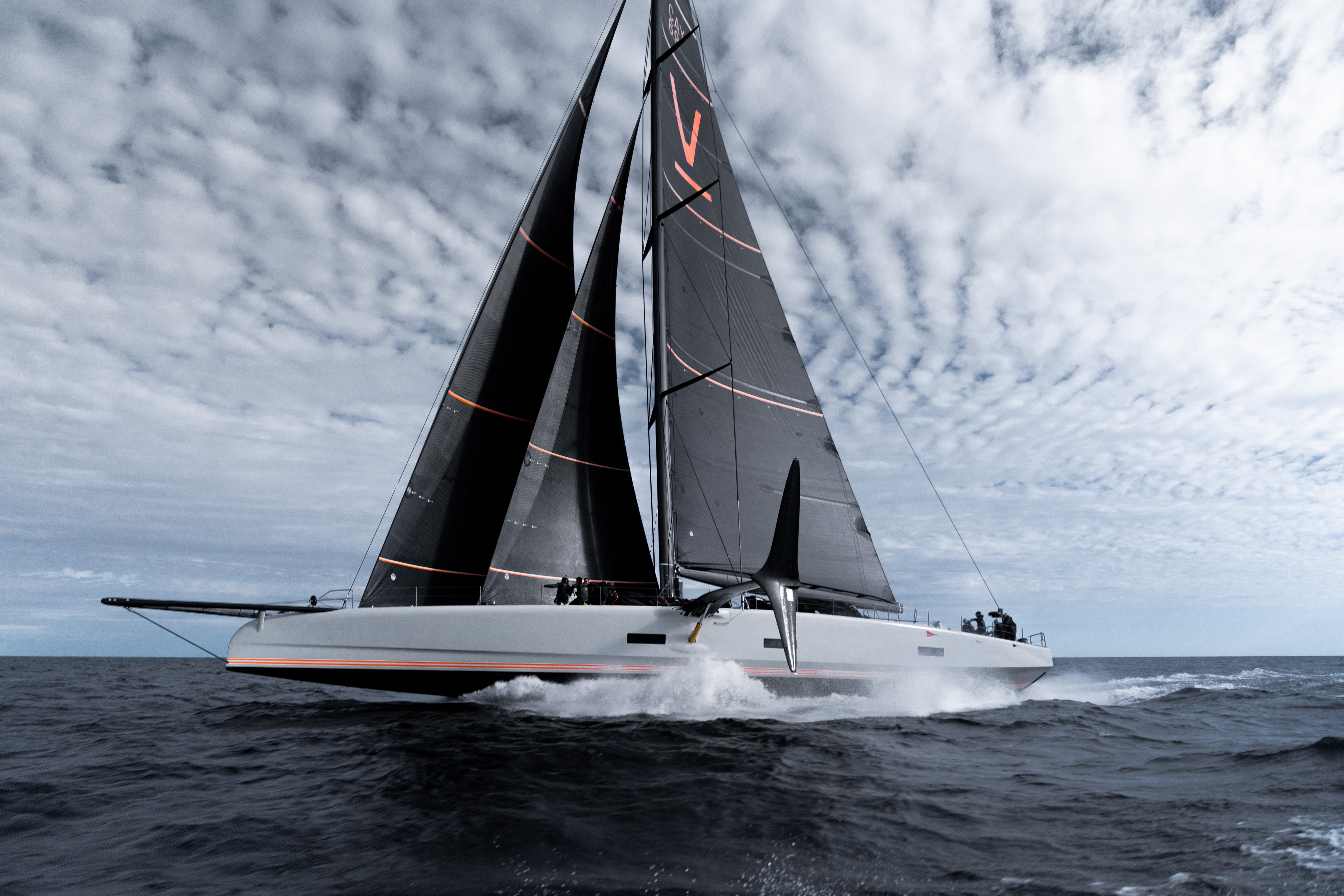
But when he feels like out-and-out luxury, the owner can turn to other boats in his fleet, as Jämsén explains. “This is the ‘memory maker’,” he says. “If you invite someone to sail Raven, it gives them everlasting memories and puts the biggest smile on their face. That’s the reason for this boat. She could do normal cruising – she has all the facilities – but that wasn’t in the list of what we had to achieve.”
